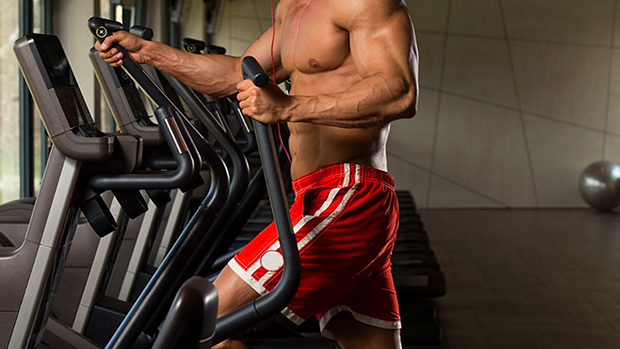Look Forward to Cardio?
Cardio blows, especially the high intensity stuff. After all, we want to lift heavy, not pedal or trot mindlessly to effing nowhere on some stationary bicycle or treadmill. Sooner or later, though, it dawns on us that we have to do some sort of cardio for our ticker, to increase our work capacity, or to attempt to burn off some calories.
This realization is a downer. It's like meeting a girl that fulfills all our wants and needs, having her name tattooed on our ass, getting a joint bank account, and only then finding out she comes with a bratty kid who's like Chucky from the horror movies.
But what if there were a way to exorcise the demons from "Chucky"? In other words, what if there were a way to make cardio fun and something you look forward to so it accentuates your love of lifting? Some American sports scientists think they've done it. They've combined psychology with physiology to devise a training method that actually makes people look forward to cardio.
What They Did
The researchers found 46 participants and split them up into two groups to test either one of two high-intensity training methods.
The first group did a "traditional" 15-minute high intensity workout on a "Lode Corival Recumbent" bike (a fancy ergometer) where they ratcheted up their intensity each successive minute until they reached 120 percent of their ventilatory threshold in the last minute. That's the point where your breathing becomes labored, i.e., when you start "sucking wind."
The second group did the opposite. They started exercising balls-out and gradually decreased how hard they pedaled (from 120% of ventilatory threshold to 0%). Both groups exerted the same amount of effort, despite the different training methods.
What They Found
Doing high-intensity cardio the normal way made the participants' hearts beat faster and faster and they tired more and more. By the end of the exercise session, they professed a hatred of life and threatened to grind down the front teeth of the researchers by pushing their faces against the front tire of the ergometer.
The second group, however, finished the workout all happy. They even looked forward to the next session and offered to take the researchers to the zoo or a ballgame afterwards.
The scientists concluded that ramping down exercise intensity (instead of ramping up) elicited "a positive slope of pleasure during exercise, improved post-exercise pleasure and enjoyment, remembered pleasure, and forecasted pleasure."
How to Use This Info
Cardio appears to be a necessary part of weight lifting and turning it from something unpleasant and boring to something you might actually look forward to sounds like something that deserves a Nobel Prize, or at least a nice fruit basket.
To test out this method, start balls-out on the treadmill or stationary bike (or any other cardio implement) and gradually, minute by minute, reduce your intensity and effort until you finish at "Sunday morning stroll in the park" pace.
For example, adjust the level on your treadmill to its highest (some go to 15 or even 20) and then lower the level by one with each passing minute.
While the scientists who conducted the study used exercise sessions that were 15 minutes long, there's no reason you couldn't apply the method to longer (or even shorter) periods. For instance, you could decrease intensity every minute and a half or two minutes instead of every minute.
There's at least one possible drawback to using this method in that some people can't just start out full bore on a cardio machine. There's simple fix, though: Just do a tiny warm up. Pedal or walk slowly for a minute or two to get the juices flowing before hitting high gear.
Source
- Zachary Zenko, Panteleimon Ekkekakis, Dan Ariely, "Can You Have Your Vigorous Exercise and Enjoy It Too? Ramping Intensity Down Increases Postexercise, Remembered, and Forecasted Pleasure." Journal of Sport and Exercise Psychology, Volume 38 Issue 2, April 2016.





